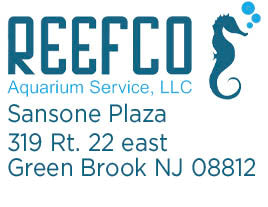The Common Signs of Coral & Fish Stress
A reef conservationist would likely tell you that in a well-connected marine system, if a change in the environment, nutrition, or maintenance often leads to issues, particularly in a closed-system like an aquarium. In aquariums, stress can kill marine life, and if left undetected for a long time, alarming signs can quickly take a turn into something much more serious.
In this article, we will look at the common signs of stress in aquariums, and what you can look out for in your corals and fish to prevent stress from getting worse.
Stress in Marine Ecosystems
In reality, stress in the seas is rather harsh and brings incapacitating sicknesses on the form of stunting growth or death among the myriad of life forms. While all land organisms scream, undeniably fish and corals show their distress in far more subtle forms requiring deeper understanding and observation.

Fish Stress: The Unseen Warning Signs
Physical Signs
1. Color Change
Fish can adapt to their environment, but an unusual color change can be a warning sign. Colors that appear pale or washed out often suggest a high degree of stress. For example, a significantly vibrant angelfish suddenly turning dull is a sign of environmental issues. Similarly, a clown fish losing its brightness is also an alarming sign.
2. Movement Change
The following movements raise concern:
- Sudden “darting” or “jerking” movements different. to your fish's usual movements
- Fish swimming close to the surface or bottom of the tank
- Fish tilting sideways or floating with their head down
- Constantly staying in one corner of the tank
3. Difficulty Breathing
When fish become stressed, a common sign is changes in their breathing behavior. Look out for:
- Closing of gills
- Gills rapidly moving up and down
- Gills looking red or inflamed
- Labored breathing
Behavioral Concerns
1. A Withdrawal From Social Engagement
The social “butterflies” becoming reclusive is a huge sign of stress. If your active fish are suddenly hiding away or are being less interactive than normal, it may be a sign that it is stressed.
2. Changes In Appetite
When fish become stressed, they usually alter their feeding behavior. This may include any of the following:
- Not eating at all
- Eating less than is normally expected
- Gorging uncontrollably
- Immediately expelling food after ingesting it
3. Elevated Aggression or Other Forms of Interactions
Stressful environments can turn normally calm fish into much more aggressive creatures. Out-of-character aggression, even such things as unexpected movements within their territory, increased rate of fin biting, or unprovoked bullying behavior indicates some level of environmental stress.
Coral Stress: The Subtle Signals
While corals appear to remain stationary, they are actually complex living organisms that are very responsive to changes in the environment.
Visual Stress Indicators
1. Tissue Recession
When corals are extremely stressed, they literally start wasting away. Watch for:
- Exposed skeletal structures because of receding tissue
- Bleached or white patches on their tissues
- Rough edges around tissues that are partially lost
- Notable yet gradual loss of tissue
2. Color Changes
Dulling and discoloration are also signals of stress. This has been seen in the ocean when corals have started turning white. This stress response is known as coral bleaching. Take a close look at your corals for the following signs of stress:
- Like a chameleon, they lose color until they turn white
- Change in the colors they once had, such as corals turning brown

3. Polyp Behavior
A healthy coral has good polyp behavior such as extending polyps during different light cycles and extending when feeding corals. However, when corals become stressed they will exhibit the following signs to let you know that they are feeling uncomfortable:
- Retracting polyps more frequently
- Partially extending polyps
- Sluggish or uneven polyp extension
- Coral not opening
Environmental Stress Factors
Understanding what causes stress is crucial for prevention:
1. Water Quality
- Inconsistent pH levels
- Fluctuating salinity levels
- High nitrate or phosphate levels
- Improper temperature ranges
2. Lighting Issues
- Incorrect light spectrum or intensity
- Sudden lighting changes
- Prolonged exposure to inappropriate light conditions
3. Water Flow and Circulation
- Inadequate or turbulent water movement
- Dead zones in the aquarium
- Lack of proper current for nutrient distribution
Preventing and Managing Stress
Proactive Strategies
1. Regular Water Testing
Invest in a comprehensive water testing kit and establish a consistent testing schedule. Track:
- pH levels
- Salinity
- Ammonia, nitrite, and nitrate levels
- Calcium and alkalinity for coral health
For automated precise monitoring of these water parameters, we recommend the Neptune Systems Trident Water Analyzer.
2. Gradual Acclimation
When introducing new inhabitants:
- Use drip acclimation methods
- Allow slow temperature and water parameter adjustments
- Minimize handling and transport stress
3. Optimal Tank Setup
- Provide plenty of hiding spaces - unsure where to start? Take a look at our guide to reef tank designs
- Ensure appropriate tank size for species
- Maintain stable, species-appropriate environmental conditions
- Create naturalistic environments mimicking native habitats
If you need help designing or installing your saltwater aquarium, the Reefco Aquarium team is always happy to help!
Monitoring Techniques
- Use digital monitoring systems
- Keep a detailed aquarium log
- Take regular photographs to track changes
- Observe inhabitants during feeding and active periods
Conclusion
Recognizing stress in your marine ecosystem is part science, part art. It requires patience, keen observation, and a deep understanding of marine life. By staying vigilant and proactive, you can create a thriving, vibrant underwater world that brings joy and wonder to your home.
If you need any help or advice regarding the health of your corals and fish, do not hesitate to reach out to the Reefco Aquariums team!



